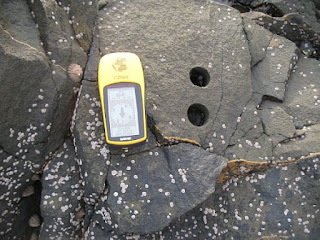Paleomagnetism and Biblical Archaeology
People have attempted to discredit the historical records of the Bible for centuries. Many times, they have used the fallacious argument from silence that there is not archaeological evidence for certain people or events, so they never happened. The Bible has been repeatedly vindicated. Radiocarbon dating has also been used to deny Scripture.
We have seen many times that radiometric dating has serious flaws (including calibration), but when the results fit the needs of the secular science industry, they are accepted. Paleomagnetism provides a calibration tool.
 |
| Holes in dolerite made by cores being drilled. As the rock cooled and solidified iron became fixed in an orientation with the Earth's magnetic field. This can be read to find out where this part of Scotland lay relative to the poles at the time the rock solidified. Image and text: Paleomagnetism studies, cc-by-sa/2.0 - © Richard Webb - geograph.org.uk/p/1688057 (The blogging platform will not let me close up the extra spaces in captions) |
The magnetic field of the earth has changed over time, and even reversed. There are magnetic minerals in rocks that essentially make a record of the power and direction of the magnetic field when they form. Great, now what?
An archaeological event in biblical history with a known date also indicates paleomagnetism for that time. This can be used to calibrate dating methods more accurately, but people still must be careful of outdated radiocarbon "refutations".
Recently, a team of Israeli archaeologists and scientists made a breakthrough in measuring paleomagnetism in archaeological material. The material came from a very significant moment in biblical history—the destruction of Jerusalem by the Babylonians. . . .
This date is corroborated in a cuneiform tablet called the Babylonian Chronicle (British Museum 21946) which independently records the fall of Jerusalem. Using this information, most scholars have settled the date of Jerusalem’s destruction at 587/586 BC. This, therefore, represents a vital anchor point in history from which other historical events can be tied, in order to establish an historical chronology.
You can read the entire article at "Breakthrough in paleomagnetic measurement — Good news for biblical archaeology."